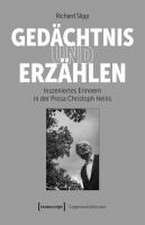Militarism and the Indo-Europeanizing of Europe
Autor Robert Drewsen Limba Engleză Hardback – 15 mai 2017
Battlefield warfare and militarism, Robert Drews contends, were novelties ca. 1600 BC and were a consequence of the military employment of chariots. Current opinion is that militarism and battlefield warfare are as old as formal states, going back before 3000 BC.
Another current opinion is that the Indo-Europeanizing of Europe happened long before 1600 BC. The "Kurgan theory" of Marija Gimbutas and David Anthony dates it from late in the fifth to early in the third millennium BC and explains it as the result of horse-riding conquerors or raiders coming to Europe from the steppe. Colin Renfrew’s Archaeology and Language dates the Indo-Europeanizing of Europe to the seventh and sixth millennia BC, and explains it as a consequence of the spread of agriculture in a "wave of advance" from Anatolia through Europe. Pairing linguistic with archaeological evidence Drews concludes that in Greece and Italy, at least, no Indo-European language could have arrived before the second millennium BC.
| Toate formatele și edițiile | Preț | Express |
|---|---|---|
| Paperback (1) | 326.49 lei 6-8 săpt. | |
| Taylor & Francis – 12 dec 2019 | 326.49 lei 6-8 săpt. | |
| Hardback (1) | 644.25 lei 24 ore | |
| Taylor & Francis – 15 mai 2017 | 644.25 lei 24 ore |
Preț: 644.25 lei
Preț vechi: 785.67 lei
-18% Nou
Puncte Express: 966
Preț estimativ în valută:
123.38€ • 125.90$ • 103.80£
123.38€ • 125.90$ • 103.80£
Carte în stoc
Livrare din stoc 16 ianuarie
Preluare comenzi: 021 569.72.76
Specificații
ISBN-13: 9781138282728
ISBN-10: 1138282723
Pagini: 294
Ilustrații: 14 Line drawings, black and white; 2 Halftones, black and white; 16 Illustrations, black and white
Dimensiuni: 156 x 234 x 21 mm
Greutate: 0.57 kg
Ediția:1
Editura: Taylor & Francis
Colecția Routledge
Locul publicării:Oxford, United Kingdom
ISBN-10: 1138282723
Pagini: 294
Ilustrații: 14 Line drawings, black and white; 2 Halftones, black and white; 16 Illustrations, black and white
Dimensiuni: 156 x 234 x 21 mm
Greutate: 0.57 kg
Ediția:1
Editura: Taylor & Francis
Colecția Routledge
Locul publicării:Oxford, United Kingdom
Public țintă
Academic and PostgraduateCuprins
List of illustrations
Acknowledgements
Abbreviations
1 The Origins and Spread of Proto-Indo-European
2 The Kurgan Theory and the Taming of Horses
3 Warfare in Western Eurasia in the Third and Early Second Millennium BC
4 Chariot Warfare, the Beginning of Militarism, and its Indo-European Connection
5 The Beginnings of Militarism in Temperate Europe
6 The Beginning of Militarism in Greece
7 The Question of Origins
Appendix: The Chronological Quandary
Bibliography of Works Cited
Index
Acknowledgements
Abbreviations
1 The Origins and Spread of Proto-Indo-European
2 The Kurgan Theory and the Taming of Horses
3 Warfare in Western Eurasia in the Third and Early Second Millennium BC
4 Chariot Warfare, the Beginning of Militarism, and its Indo-European Connection
5 The Beginnings of Militarism in Temperate Europe
6 The Beginning of Militarism in Greece
7 The Question of Origins
Appendix: The Chronological Quandary
Bibliography of Works Cited
Index
Notă biografică
Robert Drews studied ancient history—Near Eastern, Greek and Roman—at the Johns Hopkins University and received his degree in 1960. For the next 45 years he taught the full slate of ancient history at Vanderbilt University, and became interested especially in the evolution of religion and of warfare. In the latter field his publications include Coming of the Greeks (1988), The End of the Bronze Age (1993) and Early Riders: The Beginnings of Mounted Warfare in Asia and Europe (2004).
Recenzii
‘Drews’s new book ... is clearly argued and will serve the neophyte as a convenient introduction to the voluminous research—recent and classic— in the several scholarly fields whose data are adduced here’ - Journal of the American Oriental Society 141.1 (2021)
‘Cet ouvrage fournit un ‘modèle’ pour comprendre l’histoire de la guerre européenne, avec ses armes et ses premières batailles, un champ de recherches trop souvent écarté pour des raisons idéologiques déplacées (pp. 56-57), ou simplement pour des raisons de mode. Quant à l’articulation de cette histoire avec la linguistique historique indo-européenne, beaucoup reste à faire, comme l’auteur l’admet in fine. Toutefois, son ouvrage fournit des perspectives qui respectent pour l’essentiel le travail des linguistes et qui, enrichies d’études anthropologiques et archéologiques plus larges, leur permettront d’affiner leurs propres hypothèses’ - Pierre Sauzeau in Bryn Mawr Classical Review
‘Today’s archaeology, exemplified by the work of, for example, Helle Vandkilde or Kristian Kristiansen, is again interested in Indo-European migrations, war, weapons, and the flow of interaction throughout the Old World. Drews has studied these issues, through the lens of Near Eastern and ancient Greek history, throughout his career and across shifting trends in history and archaeology. Militarism and the Indo-Europeanizing of Europe draws on this experience to produce a synthesis from Caucasia to Scandinavia; to address at length topics previously remarked on in passing; and to comment on a number of current debates about the role and nature of militarism, warfare, chronological issues, Indo-European dispersions, the arrival of the Greeks in Greece, and the history of Europe’ - Christopher Prescott in AJA
‘Drews’s conclusions will, no doubt, engender a vigorous response from PIE scholars over the merits of his thesis. Regardless, Militarism and the Indo-Europeanizing of Europe is a fascinating read for the student of warfare or antiquity, even without a background in archaeology, linguistics, or Indo-European studies’ - Nathan Perz in Journal of Military History
‘Cet ouvrage fournit un ‘modèle’ pour comprendre l’histoire de la guerre européenne, avec ses armes et ses premières batailles, un champ de recherches trop souvent écarté pour des raisons idéologiques déplacées (pp. 56-57), ou simplement pour des raisons de mode. Quant à l’articulation de cette histoire avec la linguistique historique indo-européenne, beaucoup reste à faire, comme l’auteur l’admet in fine. Toutefois, son ouvrage fournit des perspectives qui respectent pour l’essentiel le travail des linguistes et qui, enrichies d’études anthropologiques et archéologiques plus larges, leur permettront d’affiner leurs propres hypothèses’ - Pierre Sauzeau in Bryn Mawr Classical Review
‘Today’s archaeology, exemplified by the work of, for example, Helle Vandkilde or Kristian Kristiansen, is again interested in Indo-European migrations, war, weapons, and the flow of interaction throughout the Old World. Drews has studied these issues, through the lens of Near Eastern and ancient Greek history, throughout his career and across shifting trends in history and archaeology. Militarism and the Indo-Europeanizing of Europe draws on this experience to produce a synthesis from Caucasia to Scandinavia; to address at length topics previously remarked on in passing; and to comment on a number of current debates about the role and nature of militarism, warfare, chronological issues, Indo-European dispersions, the arrival of the Greeks in Greece, and the history of Europe’ - Christopher Prescott in AJA
‘Drews’s conclusions will, no doubt, engender a vigorous response from PIE scholars over the merits of his thesis. Regardless, Militarism and the Indo-Europeanizing of Europe is a fascinating read for the student of warfare or antiquity, even without a background in archaeology, linguistics, or Indo-European studies’ - Nathan Perz in Journal of Military History
Descriere
This book contends that Indo-European languages came to Greece, central Europe, southern Scandinavia and northern Italy no earlier than ca. 1600 BC, brought by the first military men whom Europeans had seen. That the Greek, Keltic, Italic and Germanic sub-groups of Indo-European originated in the middle of the second millennium BC is a controversial idea. Most Indo-Europeanists date the origin a thousand years earlier, and some archaeologists would place it before 5000 BC, as agriculture spread through Europe. Here Robert Drews argues that the Indo-European languages came into Europe via military conquests, and that militarism – a man’s pride in his weapons and in his status as a warrior - began with the employment of horse-drawn chariots in battle.






















